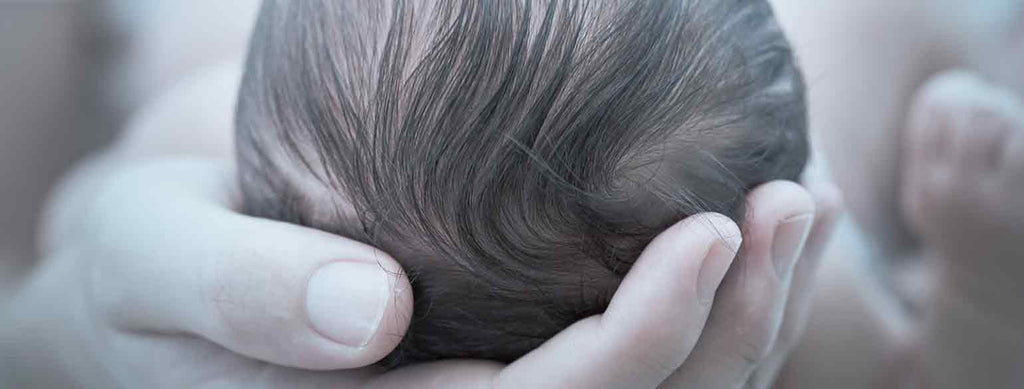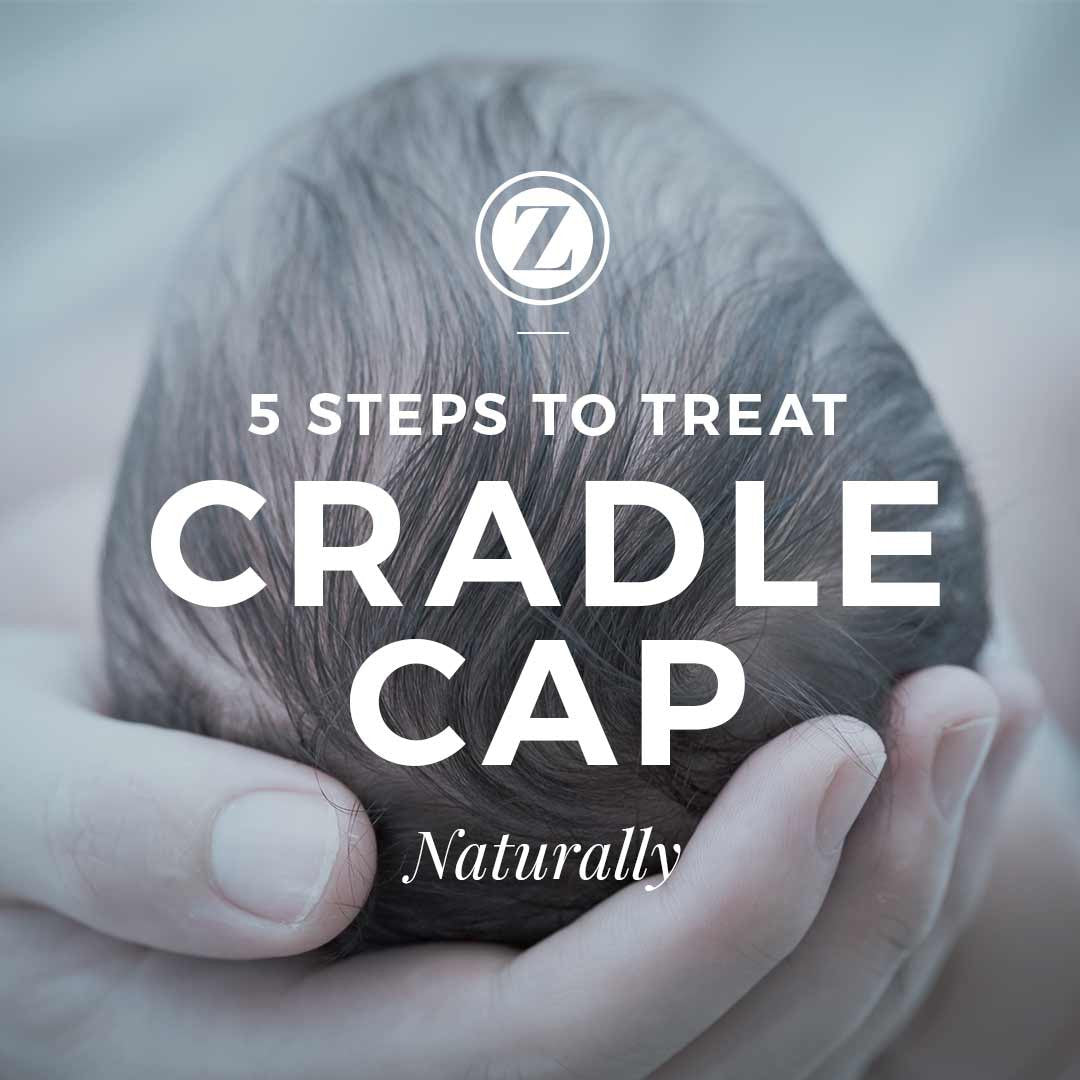5 Steps to Treating Cradle Cap Naturally

Each of my three kids had cradle cap to some degree or another – two of them into the toddler years. This isn't surprising, since approximately 70% of babies get it. Cradle cap usually shows up in the first three months of life and ends by the time a child is a year old.
What Is It?
Seborrheic dermatitis is a form of eczema, commonly called "cradle cap" in young children. The condition is evident by a yellowish crust on the scalp, and sometimes on the forehead, eyebrows and lids and behind the ears, typically areas where there are a lot of oil producing sebaceous glands. It does not usually cause itching, but can cause sensitivity with inflammation and redness.
What's the Cause?
It may be tempting to worry that cradle cap is caused by poor hygiene and that you need to step up the bathing and shampooing, but don't! Babies don't need to be bathed more than a few times per week, with water and very mild soap or a product like Baby Bath Tea that contains calming anti-inflammatory oats and herbs. Over-washing or using harsh chemicals, detergents or fragrance can be very irritating to a baby's delicate skin.
Although the cause is unknown, one theory is that the mother's hormones, which pass through the placenta before birth cause overactive sebaceous glands in her infant. This may be why as a child gets older and their hormones level out, the cradle cap disappears.
Another possible cause is malassezia, a yeast (fungus) that grows in the sebum along with bacteria. This yeast requires fat to grow, which is why the oily sebum is the perfect environment. When the fungus grows too rapidly, it interferes with the normal renewal of skin cells.
Natural Treatment
Want to hear the good news? Cradle cap (seborrhaic dermatitis) is not contagious, and in most cases it will clear up on its own. And here are some easy, natural treatments for cradle cap that you can do at home to help manage the crust and flakes on your baby’s scalp. (And if there's another natural treatment that you've used on your babies that's not listed here, please tell us about it in the comments!)
1. RESIST the urge to pick at the scalp!
I know the temptation is strong, but this is really important. Picking can scratch, irritate or even cause an infection in the area. Instead, follow these next steps.
2. Soften the dead skin.
My favorite method to use on my babies was to apply Baby Oil to the scalp. Gently rub the oil into the scalp and let it soak and soften the crust for 20 minutes or so.
3. Remove the dead skin.
Gently rubbing the scalp with a warm, wet washcloth should help to loosen and remove the crust. Some people like to use a soft baby brush or find that a fine-toothed comb helps remove the dead skin from the hair. Just be careful that you are not scrubbing too hard, and always avoid the fontanelle.
4. Shampoo and rinse hair well.
When my children were toddlers, I followed the shampoo with a highly diluted apple cider vinegar rinse to help restore natural pH. It was a wonderful scalp tonic.
5. Consider ongoing treatment with essential oils (see below).

Lee's own experience with cradle cap
Essential Oils
Can essential oils play a role in managing cradle cap? They have many powerful properties that can benefit our health when used correctly. It makes sense that essential oils containing anti-fungal, anti-bacterial and anti-inflammatory properties could be beneficial against inflammation, yeast or fungus. Here are some essential oils containing these properties, that are considered safe for babies when diluted to a 1% concentration:
- Tea Tree (melaleuca alternifolia) EO
- Lavender (lavandula augustifolia) EO
- Roman Chamomile (anthemis nobilis) EO
- Geranium (pelargonium gravelolens) EO
- Cedarwood (cedrus atlantica) EO
To use: Mix 1 fl oz of organic coconut oil or high-oleic sunflower oil with 5 drops of one or a combination of essential oils above (5 drops total). Blend well.
Not all oils are equal. I choose organic whenever possible for the most pure, pesticide-free product. Is is worth noting that the scalp is very porous, and a large portion of what is put on the scalp will be absorbed. This is why I feel a dandruff shampoo should be avoided unless deemed necessary by your child’s physician – dandruff shampoos are filled with harsh ingredients that may not be safe for a child (or adult!).
Dietary Considerations
In addition to topical preparations, it is worth considering that the skin is very sensitive and reactive to our internal health. If your child is breastfed, be conscious of foods you may eat that might not agree with your baby. Taking a probiotic and making sure to consume healthy fats and Omega-3 essential fatty acids can promote a healthy gut and reduce inflammation by being transferred through breast milk.
We wish you all the best in dealing with your own run-ins with cradle cap, and remember you're not alone! You (and your baby) will get through this, and the best part is that the best remedies for treating cradle cap involve time, gentle treatment and love – what better excuse to make a beautiful bonding ritual out of it! Happy times indeed.


Comments on this post (1)
Great tips! All three of my boys had it and I just used organic coconut oil, rubbed in on and left for 20 min and combed it out. Left the hair smelling good too :)
— Rachel